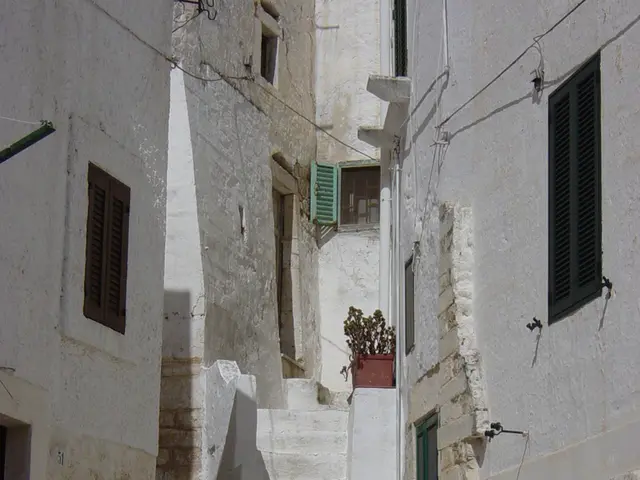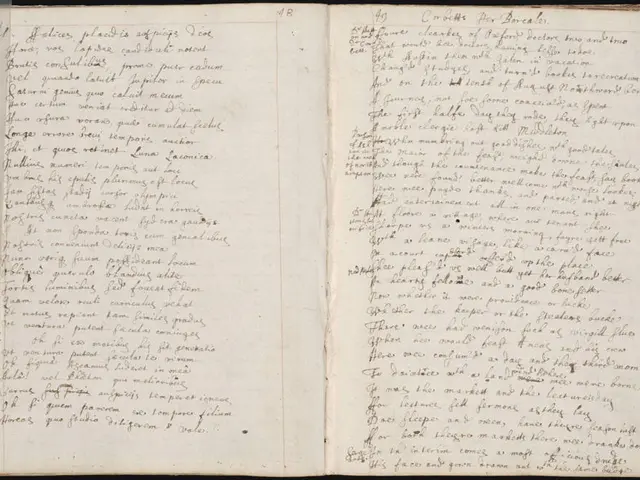State Visits: Elevating the Diplomatic Dance
International Relations' Evolving Dynamics: The Impact of Diplomatic Visits on Global Affairs
Join us on a journey through the enchanting world of state visits, an artful dance between nations, rich in history, ceremony, and symbolism. State visits, the most prestigious form of diplomatic engagement, are the high-stakes ballet between heads of state, signifying mutual respect, commitment, and shared goals.
Grand Entrances: The Splendor of State Visits
State visits are historically signature events that evoke grandeur, marked by pomp and ceremony. Guard parades, banquets, and grand receptions form an integral part of these visits. They often culminate in the signing of landmark agreements, bolstering economic, political, or military alliances. The U.S.'s state visits with China, for instance, have been instrumental in maintaining economic harmony, despite ideological discrepancies.
Ancient Roots: Diplomatic Dances through the Ages
Ancient Rome danced the diplomatic twirl with the notion of amicitia, a mutual understanding of goodwill between allies. Medieval Europe's royal rendezvous were crucial in forging military alliances, political marriages, and fostering peace pacts. The modern, more orchestrated version of state visits took shape in the 19th century as countries normalised permanent embassies and diplomatic standards.
Formal Visits: Ministers Tango for Substance
Apart from state visits, formal visits by heads of government or senior ministers serve as practical, agenda-driven dance steps. These events tackled issues such as trade negotiations, security matters, or environmental cooperation, in a more focused, less ceremonial setting. They are vital in modern diplomacy, given their practicality and impact on bilateral relationships.
Modern Balance: Global Economies in Check
During formal visits, the focus lies on pressing issues, providing a venue for urgent problem-solving and negotiation. For example, the U.K.'s formal visits to India have led to significant bilateral trade agreements, promising billions in economic growth. This opportunity for impactful discussions in a condensed timespan highlights the importance of formal visits in our dynamic world.
Working Visits: Diplomatic Quicksteps
When matters require immediate action or swift reactions, working visits come to the fore. These visits have fewer protocols and a more simplified structure, concentrating on substantive discussions and problem-solving. During the COVID-19 pandemic, working visits played an essential role, facilitating coordination responses, resource sharing, and recovery strategies.
Stepping Up to Consideration: Strategy and Reach
The value of working visits lies in their flexibility, with leaders taking swift action directly, addressing issues relating to national security, economic stability, or international crises. Working visits provide a platform, not only for leaders to respond to immediate challenges but also for strengthening diplomatic alliances and solidifying shared purposes.
Private Visits: Diplomacy Behind Closed Doors
Contrasting the grandeur of state visits, private visits are the informal, confidential dance between nations. These visits often transpire without media attention or public scrutiny, serving personal or sensitive objectives. However, private visits can be strategically profound, as leaders take advantage of their relaxed environment to forge bonds, explore sensitive issues, or even moderate emerging crises.
A Strategic Two-Step: Quiet Influence and Informal Engagements
Private visits may seem inconsequential, but they can transform international affairs subtly. Informal, closed-door discussions between world leaders during international gatherings have paved the way for turning tides in protracted negotiations, creating environments conducive to meaningful dialogue devoid of the constraints of public opinion or media scrutiny.
Soft Power in State Visits: Leveraging Respect and Affinity
Beyond the financial and political implications, state visits serve as potent tools for displaying a nation's soft power – the ability to shape the world through attraction and persuasion, rather than armed force or monetary might. In this form, state visits demonstrate respect and admiration, fostering the development of understanding and goodwill, which strengthen diplomatic relations in the long run.
Cultural Shimmer: Harnessing the Power of Culture and History
The symbolic aspects of state visits are carefully designed to embody the essence of a nation, showcasing its culture, history, and strengths. A compelling example of this can be seen in Indian President Macron's visit to France, which was infused with cultural symbolism, highlighting the culmination of their shared history and the importance of continuity. Such gestures establish foundations for mutual respect and understanding, thereby fostering cooperative opportunities in the future.
Empowerment and Engagement: A Modern Art Form
In today's connected world, the soft power of state visits proves a critical tool for nations to extend their influence and capture the hearts of others. Countries like Japan and South Korea have mastered this approach through cultural diplomacy and the promotion of national assets, sharpening their global standing and strengthening bonds with other countries. The future of state visits will see this delicate dance of power, diplomacy, symbolism, and cultural exchange continue to evolve.
Navigating the Digital Era: Reimagining State Visits
The digital age has revolutionized diplomacy in many ways, redefining how nations engage in state visits. Social media platforms, live-streamed events, and virtual meetings are integral elements of digital diplomacy, granting nations a more interactive and accessible global presence.
Enchanting the Digital Stage: Diplomacy Comes to Life
Digital diplomacy is a testament to humanity's pursuit of transparency and personal connection, enabling leaders to speak directly to their people, bypassing traditional media. While this approach holds many advantages, it does come with its own set of challenges, such as miscommunication and misinformation risks.
During the COVID-19 pandemic, digital platforms breathed new life into diplomacy, enabling virtual meetings, fostering real-time collaboration, and bringing the world closer together. These innovations have broadened the audience for state visits, making once exclusive events open to the global public, shaping international opinions in the process.
Immortalised Moments: State Visits Shaping History
Exploring key historical visits provides a glimpse into the impact of state visits in reshaping global geopolitics:
- Nixon's visit to China (1972): This visit marked the beginning of a new era in the complex relationship between the U.S. and China, effectively ending years of isolation and hostility.
- Sadat's visit to Israel (1977): This landmark visit signaled the first official trip by an Arab leader to the Jewish state, eventually leading to the signing of the Camp David Accords, a peace agreement between Egypt and Israel.
- Obama's visit to Cuba (2016): This visit represented the first by a sitting U.S. president since 1928, symbolising a thawing of relations between the two countries and opening the door for greater diplomatic and economic engagement.
Each of these visits transcended protocol and left an indelible mark on global geopolitics, demonstrating the immense power of diplomacy and its capacity to foster lasting change.
Overcoming Obstacles: Navigating the Nuances of State Visits
While state visits are often celebrated, they are not without their critics. Some see these visits as expensive spectacles, devoid of tangible outcomes. Concerns about endorsing regimes with poor human rights records also linger, raising ethical considerations.
Embraced Evolution: Evolving with the Ebb and Flow of Diplomacy
In response to these concerns, nations have reevaluated the structure and purpose of state visits to ensure they offer substance and bring about positive change. Streamlined, purpose-oriented visits that prioritize functionality over formality are increasingly popular, addressing the complaints of critics and shifting the emphasis to tangible results. As diplomatic protocol continues to evolve, the spirit of collaboration and mutual understanding will remain a constant element in a fluid and interdependent world.
- The grandeur of state visits, rich in history and symbolism, are marked by ceremonies such as guard parades, banquets, and grand receptions, often leading to the signing of landmark agreements that bolster economic, political, or military alliances.
- Diplomatic dances through the ages have evolved significantly, from ancient Rome's notion of amicitia to the more orchestrated modern state visits that took shape in the 19th century.
- Formal visits by heads of government or senior ministers serve practical, agenda-driven purposes, tackling issues like trade negotiations, security matters, or environmental cooperation, in a more focused and less ceremonial setting.
- During the COVID-19 pandemic, working visits played an essential role in facilitating coordination responses, resource sharing, and recovery strategies.
- Private visits offer leaders an opportunity to forge bonds, explore sensitive issues, or moderate emerging crises, often occurring without media attention or public scrutiny. However, their impact on international affairs can be profound, as shown by informal, closed-door discussions between world leaders.







